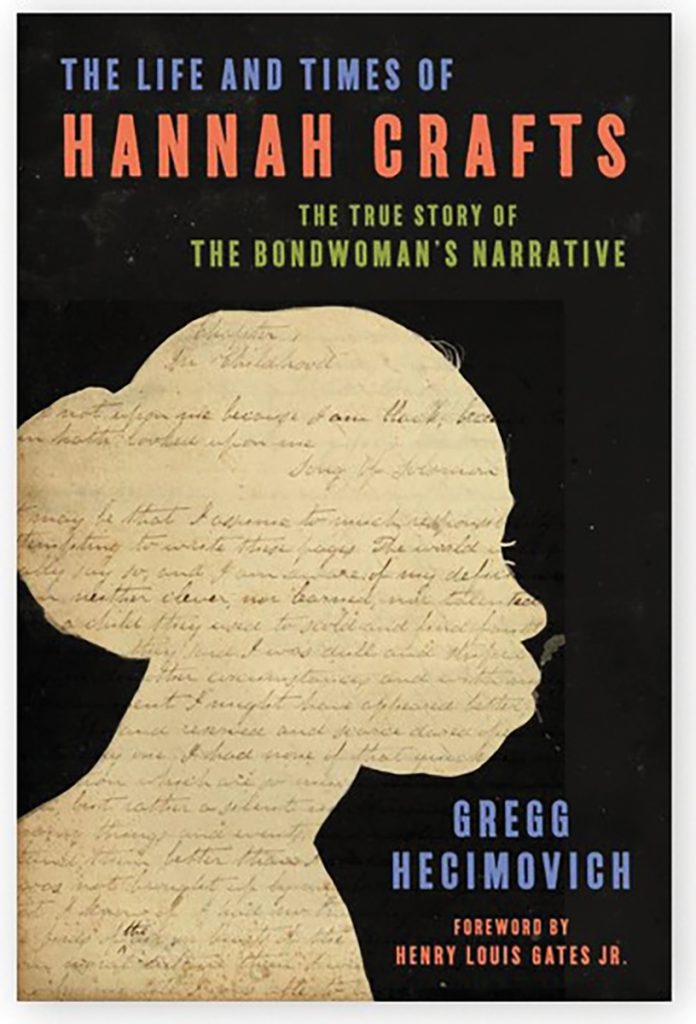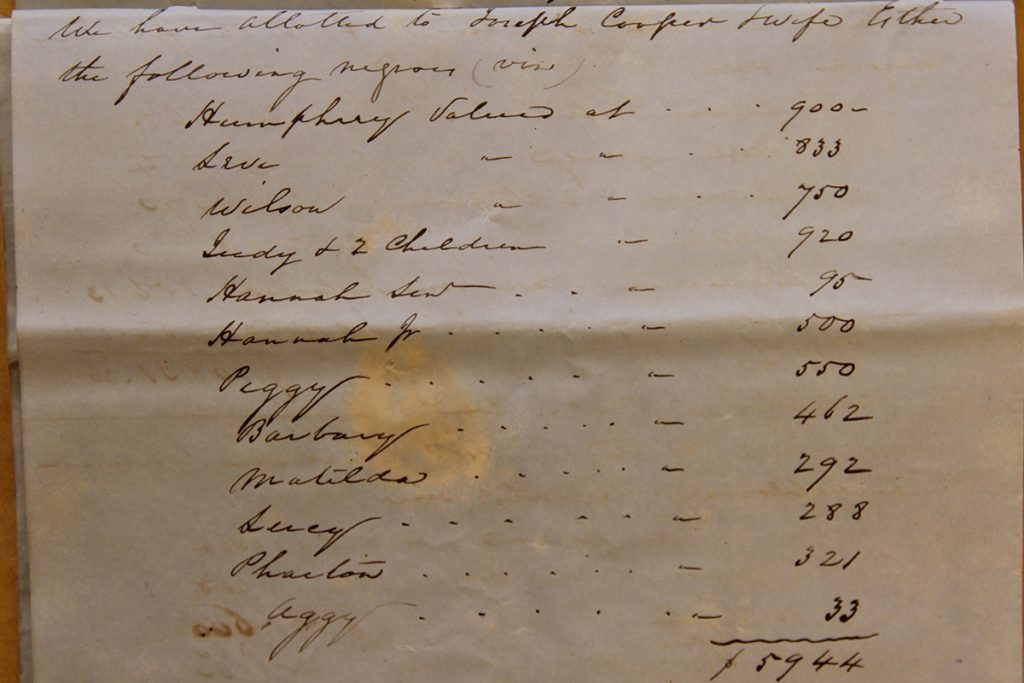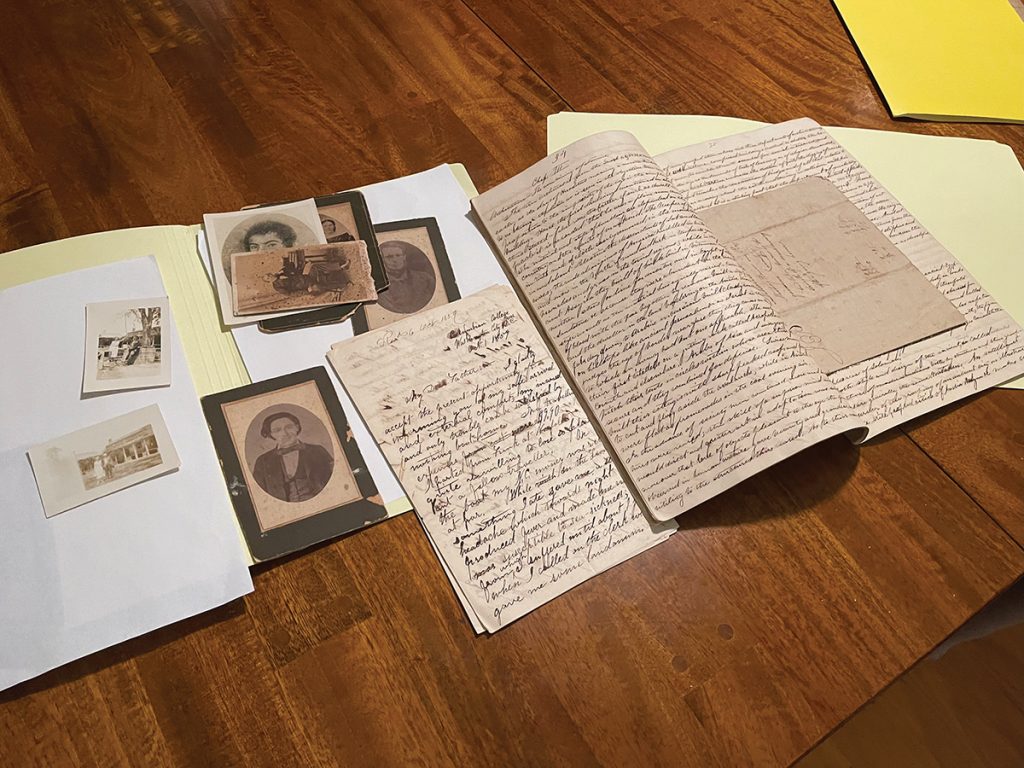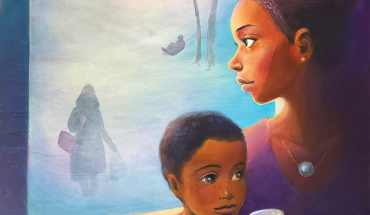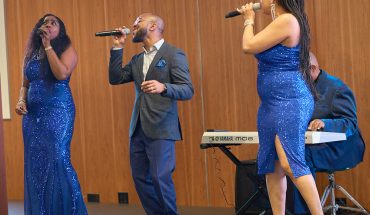A new book by Gregg Hecimovich tells the story of the North Carolina native who wrote the first known novel by an African American woman.
by W. Jason Miller | photos courtesy of Gregg Hecimovich
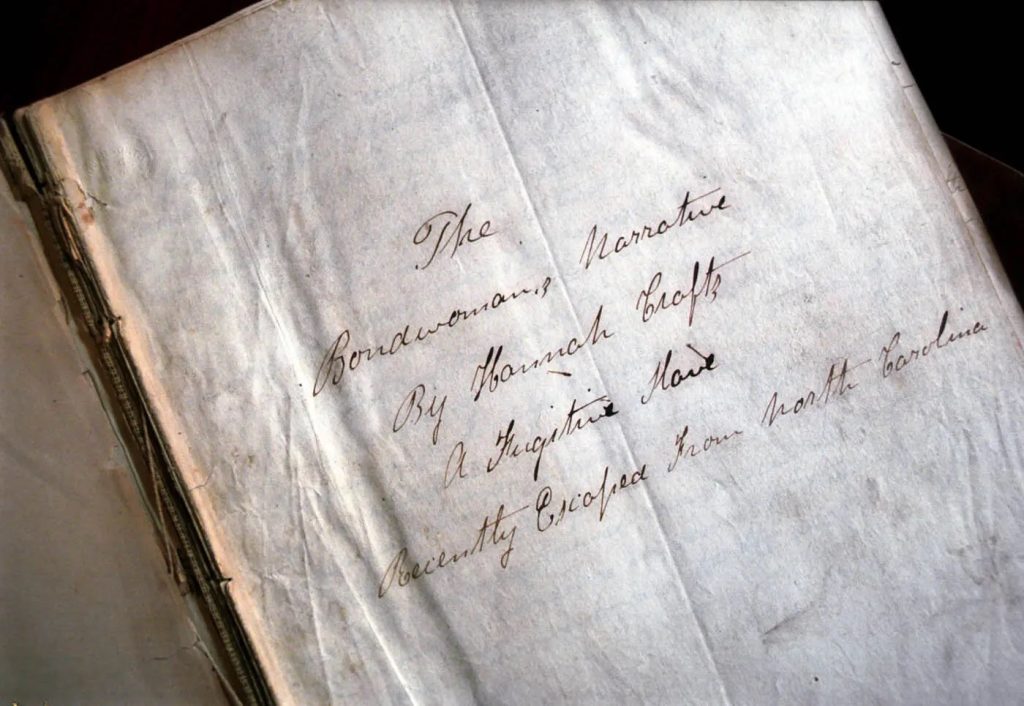
A disheveled manuscript titled The Bondwoman’s Narrative was listed only as “Lot 30: Unpublished Original Manuscript” when it appeared in a Swann Auction Galleries catalog in 2001. Written between 1853-1859, few people knew the hand-sewn pages pressed clumsily between two boards even existed. Barely meeting its retainer, the manuscript received only one bid.
But The Bondwoman’s Narrative became a bestseller when it was published in 2002, after being quietly purchased and then authenticated by esteemed historian Henry Louis Gates, Jr. As news spread that this was the first known novel written by an African American woman, the skill of the book’s writer amazed and confounded readers and scholars like. People publicly asked, “How could an African American woman of this era write such elegant prose?” And if so, “Who was she?”
Amid rampant speculation entered Gregg Hecimovich, a scholar currently serving as Hutchins Family Fellow at Harvard University. Initially, he was as skeptical as others. “The idea that the novel was written by a formerly enslaved fugitive appeared to me too good to be true,” Hecimovich says. “I got into the research as a skeptic.”
Hecimovich devoted two decades of work to solving that mystery — and his book The Life and Times of Hannah Crafts, published in October, reveals more about the writer’s identity and true marvel of her work.
I sat down with Hecimovich at his home in Chapel Hill 10 days before he spoke about his book with Gates at an event at Harvard University. He defines the survival of Crafts’ book to me as nothing less than a “gift received.” “She became a New York Times bestselling author because of the sheer genius of the work,” Hecimovich says. “The novel itself is profound, artistic and funny. It’s a page-turner.”
There’s only one handwritten copy in existence, written solely by the author on paper secreted away from her captors, with letters scripted using a goose quill lifted from an inkwell. Revisions were made by pasting slips of paper in place with a thimble — you can see the dimple marks it left behind on the manuscript. The completed pages were sewn together between twin boards that serve as its makeshift covers.
Uncovering Crafts’ identity required locating overlooked property records, conducting extensive forensic paper analysis and even studying handwritten notes made on the backs of ignored calendars. In family histories located in people’s homes, Hecimovich found “a runway to follow,” using many documents that are more than 170 years old. Hecimovich gently turned every one.
The research took him 20 years. Because Crafts taught herself to write, her manuscript contained several unusual stylistic elements typical of an autodidact. For words that split unexpectedly, she placed hyphens at the start of following lines rather than at the far right of her margins. She also grounded her quotation marks as double commas, staked at the feet of her words, rather than parasailing them in the air.
When Hecimovich began his quest in 2002, many experts were highly skeptical that an enslaved woman could write such a remarkable novel. In going through the archives, he had a realization: “There was a moment happening in the margins of the enslavers’ papers and journal entries that earlier generations of scholars weren’t really paying attention to.”
Hecimovich learned that living in Murfreesboro, in northeastern North Carolina, in 1852 meant Crafts would have had “ready access to an extensive library less than a block away” at Chowan Baptist Female Institute. Beyond library archives, he says, “it was really the generations of descendent communities who held this history.”
Through his writing, Hecimovich allows us to see Crafts at the very moment she chooses to name her captors. After risking a hard-won freedom via the Underground Railroad in 1857, Crafts finally had her first chance to write without fear.
Where her original manuscript read “Wh—r,” Crafts now found the courage to add the letters “eele” above that dash to spell “Wheeler,” pointing to John Hill Wheeler, a lawyer, politician and planter from Murfreesboro.
Crafts’ identity was most often represented as an “X” on ledgers, but Hecimovich noticed entries located on the backs of day calendars at the Library of Congress, where Wheeler wrote down the actual names of his captives. This was the clue Hecimovich needed. With a new purpose, he found himself drawn to Bertie County.
Befriending descendent communities over years of visits, Hecimovich realized in talking to actual people that the story was there. “Racist practices have simply kept it out of our histories,” he says. “I entered these communities as a listener.” In her novel, Crafts prominently included a famous grouping of trees near the plantation where she was born in Bertie County known as “The Gospel Oaks.”
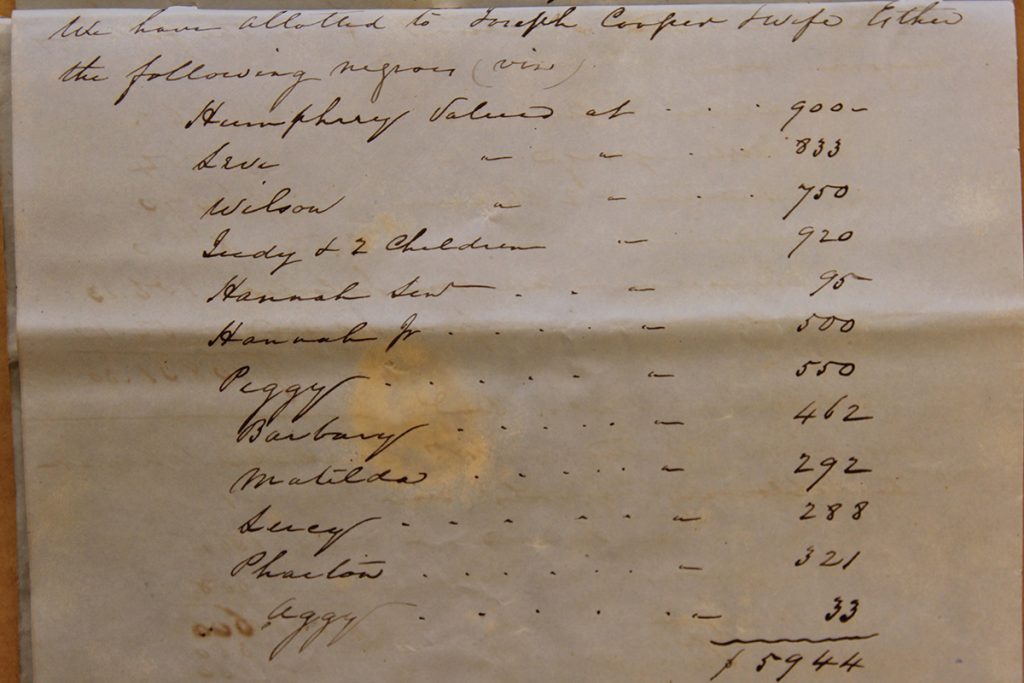
The final one of these trees fell in November of 2011. While standing there, Hecimovich received a phone call. Divinely, he learned that a letter had been found linking the author to a farm where she found her freedom in New York State. It allowed Hecimovich to definitively confirm Crafts’ identity as the author of The Bondwoman’s Narrative. Standing by that fallen tree, the land seemed to have one last story to tell.
Such literacy has been “overlooked by scholars who turned their back on it,” says longtime preservationist and Bertie County historian Dr. Benjamin Speller. “It means a lot that the academic communication channels and the gatekeepers are finally paying attention,” he says. “Something of this kind of historical importance should have been picked up a long time ago — and there’s more stories like this still out there.”
This article originally appeared in the February 2024 issue of WALTER magazine

